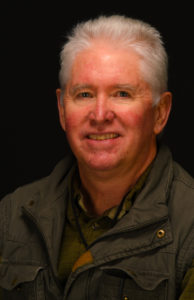
Craig Conley, Highlands forestry professor
Las Vegas, New Mexico – A new partnership between Highlands University and New Mexico State University aims to improve forest health in New Mexico.
The partnership will give students and faculty at both universities more opportunities for collaborative research and education at the John T. Harrington Forestry Research Center in Mora, New Mexico that NMSU operates.
“With this partnership we are creating a center of excellence for forestry research that is unique in New Mexico,” said Craig Conley, Highlands University forestry professor. “This partnership opens up exciting new student and faculty research opportunities on forest health in areas such as post-fire restoration and managing forests in an era of climate change.
“For instance, we will study strategies to move trees like ponderosa pines that are adapted to warmer, dryer condition to higher elevations in forests to help preserve forest ecosystems and genetic diversity,” Conley said.
Highlands has the only forestry program in New Mexico, with the Society of American Foresters accrediting the program in 2013.
Conley, who is part of Highlands University’s Natural Resources Management Department, played a lead role in developing the memorandum of understanding, or MOU, with New Mexico State University.
“Another important benefit of this MOU is that it opens up new possibilities to fund Highlands University student and faculty research through federal McIntire-Stennis grants earmarked for forestry research. This is huge for us,” Conley said.
Owen Burney, New Mexico State University forestry professor superintendent for the university’s John T. Harrington Forestry Research Center, also played a key role in developing the partnership with Highlands.
Burney said the 110-acre research center’s forest nursery greenhouses produce approximately 250,000 seedlings per year for forest restoration, regeneration and research.
“Highlands is very strong in forestry education and NMSU offers the research component,” Burney said. “Together, we will see an increase in research productivity and increased interdisciplinary teaching opportunities.”
Burney said the partnership will bring greater visibility to forest health and associated research.
“The goal is to increase engagement in students, the general public, and natural resources professionals across the region on forest issues,” Burney said.
Donovan Velasquez, a 22-year-old Mora, New Mexico native, is on track to graduate in December 2017 with a degree in forestry from Highlands.
“The forestry faculty at Highlands is awesome because they go out of their way to help us learn content and also are well-respected experts in the field,” Velasquez said. “This new partnership with NMSU will allow us to get more hands-on research experience, making us more competitive in the job market.”
Velasquez, who worked as a temporary summer employee at the John T. Harrington Research Center near his hometown, said he hopes to learn more about how research projects at the center can be used to help forests adapt to climate change.
Some other goals of the partnership between Highlands and New Mexico State University include:
- Implement and promote a feeder program for Highlands forestry graduates to enter doctoral programs at New Mexico State.
- Provide volunteer, internship and other programs for undergraduate students at both institutions.
- Increase forestry faculty resources and expertise.
Conley said another new Highlands University partnership, this one with the New Mexico Forest and Watershed Restoration Institute based at Highlands, will create more collaboration and resource sharing between the two institutions.
“This second partnership will also help Highlands grow its Natural Resources Management Department,” Conley said.
Kent Reid, New Mexico Forest and Watershed Restoration Institute director, said: “This new partnership with Highlands will allow us to tap into the natural resources management faculties’ expertise for the institute’s projects. In addition, it formalizes the teaching contributions of my staff in areas such as forest policy and forestry measurements.”
